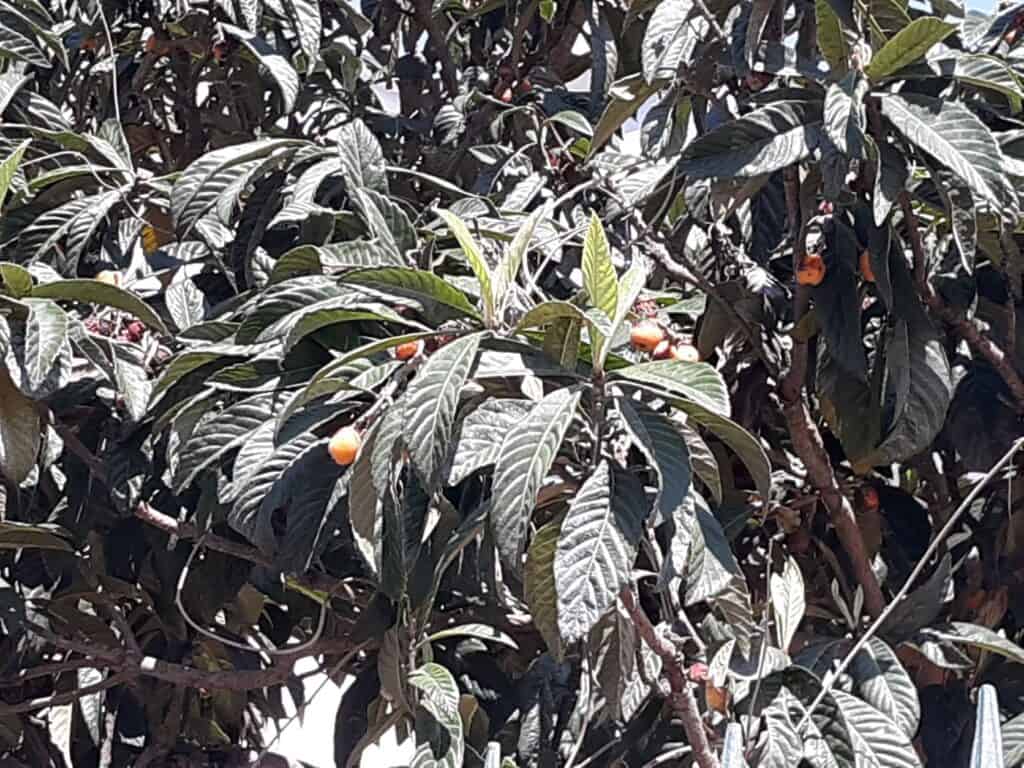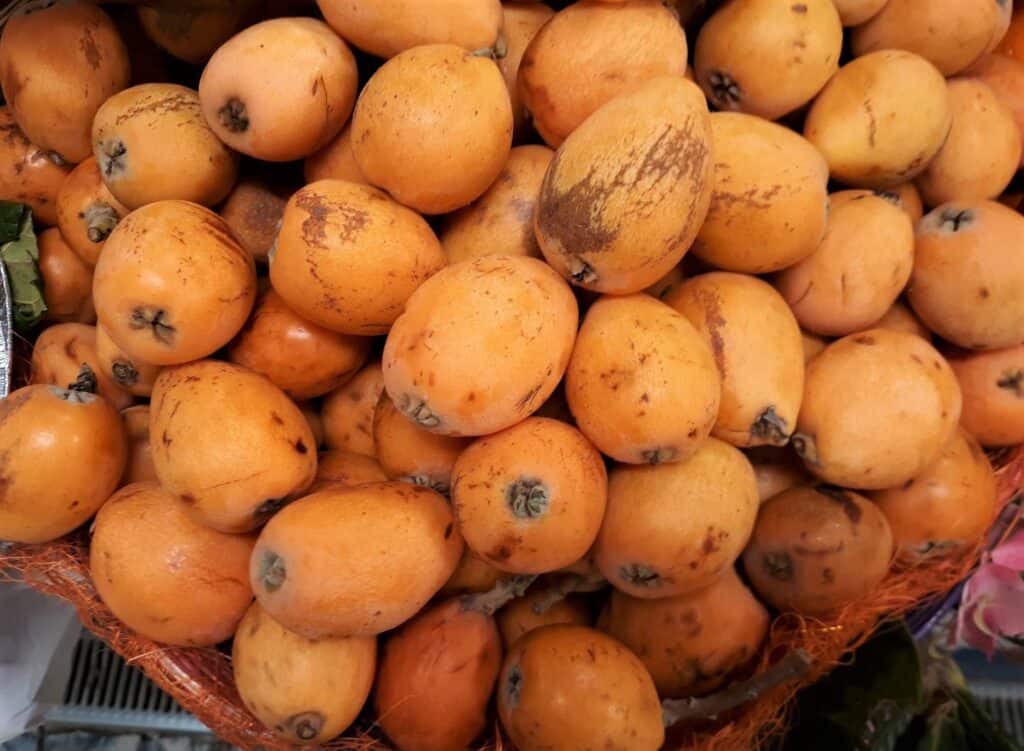The slightly sweet, slightly acidic fruit has been cultivated in China for 1,000 years. But, it’s also widely grown in Portugal.
We were walking with my friend Lucia in Lisbon when I excitedly pointed out a Nêspera tree full of ripe fruit.
“Do you like Nêspera?” she asked.
“I do!”
“You and my niece are the only ones,” she laughed.
Perhaps Nêspera is an acquired taste, but I really like them!

Nêspera Origin Story
Loquat, known as Nêspera in Portugal, is originally from China. But, the fruit spread around the world quickly, first to Japan about 1,000 years ago.
Today, Loquat trees can be found throughout the Mediterranean and Middle East as well Central and South America, the southern United States, and New Zealand as well as parts of Polynesia.
Loquats, along with Persimmons, probably arrived in Portugal in the 16th century when Portuguese explorers traveled to the Far East. Called Nêspera in Portugal, a variation on the species name Mespilus became extremely popular and is now grown in many backyard gardens.
Nêspera uses
The small, orange skinned, pear shaped fruit are delicious picked straight off the tree. I peel the skin, cut them in half and scoop out the seeds with a spoon. They’re juicy, slightly sweet and slightly tart. People often say it tastes a little like a peach or apricot. I say it tastes a bit like an acidic pear. Perhaps this is why the it’s called Nêspera, since the Portuguese word for Pear is Pera.

Under ripe Nêspera are also good for making pies and tarts.
The fruit is good in jams, jellies, and chutneys. Nêspera can be fermented to make a low alcohol wine, as well.
In Italy, the Nêspera seeds are distilled to make the Nespolino liqueur. However, the seeds, like apricot pits, contain cyanogenic glycosides with release cyanide when consumed, so I would leave the making of Nespolino to the professionals.
Where to get Nêspera in Portugal

The most common type of Nêspera grown in Portugal is the Tanaka. It is grown in backyards all over the country, so someone besides myself and my friend Lucia’s niece must be eating them!
I’ll occasionally see a basket of Nêspera in my local Portuguese grocery store, Pingo Doce, but for the most part, the big chains don’t stock a lot of Nêspera.
That doesn’t mean you can find Nêspera.
In my town of Setubal, there’s often someone sitting behind a card table piled high with Nêspera from their garden.
There’s also Nêspera trees flush with ripe fruit in the spring on public land. Just across the street from my apartment is a school that is being renovated. In the courtyard are two Nêspera trees, that were heavy with orange fruit. One day I noticed construction workers picking some for lunch, Later, one of the workers went back and filled up a bag before heading home.
The Forte de São Filipe, one of the top tourist attractions in Setubal, also has a couple Nêspera trees growing outside the castle’s imposing walls. I went by recently, only to be disappointed that they had been picked clean.
So, lesson learned. If you spot a Nêspera tree, don’t procrastinate or you may be left without fruit.
AAbout the Author

Brent Petersen is the Editor-in-Chief of Destination Eat Drink. He currently resides in Setubal, Portugal. Brent has written the novel “Truffle Hunt” (Eckhartz Press) and the short story collection “That Bird.” He’s also written dozens of foodie travel guides to cities around the world on Destination Eat Drink, including and in-depth eating and drinking guide to Portugal. Brent’s podcast, also called Destination Eat Drink, is available on all major podcasting platforms and is distributed by the Radio Misfits Podcast Network.
